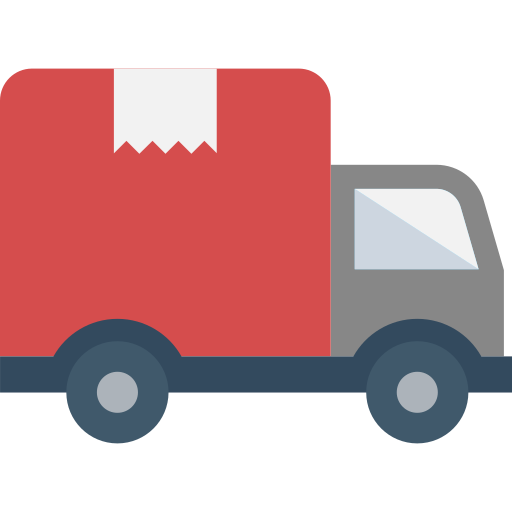Unravel the Differences Between Standard and Regulation Shuffleboard Table Sizes!
When you're looking into adding a shuffleboard table to your game room, you'll quickly find that size matters a lot more than you might initially think.
The lengths of standard shuffleboard tables can vary widely, from 9 to 22 feet, but if you're considering tournament play, you'll need a regulation-size table, which always measures 22 feet.
Now, the choice between a standard and a regulation table isn't just about space—it also affects gameplay and skill development.
The question is, how do these differences impact your game, and what should you consider to make the best choice for your space and playing style?
Let's explore these nuances to help you decide.
Understanding Shuffleboard Table Sizes
When selecting a shuffleboard table, it's vital to evaluate the various sizes available to meet both your space requirements and gameplay preferences.
You're not just buying a game table; you're investing in a centerpiece for entertainment that demands precision and adherence to industry standards.
In the area of shuffleboard, size does matter, and it's critical to distinguish between standard shuffleboard table dimensions and regulation shuffleboard table dimensions.
Regulation tables, often used in tournaments and professional settings, typically measure 22 feet in length.
This size is approved by the National Shuffleboard Association and is designed for those who are serious about refining their skills in a competitive environment.
However, standard tables vary more in size, ranging from 9 to 22 feet.
These are tailored to cater to different environments, from intimate home game rooms to more expansive spaces like community centers or commercial venues.
It's important to take into account the manufacturer's specifications regarding the playfield's thickness and width, as these dimensions greatly impact the gameplay quality.
For instance, a thicker playfield, generally about 3 inches, guarantees better playability and durability, resisting warping over time.
The width of the playfield should also complement the length to maintain a challenging yet enjoyable game dynamic.
Selecting the right size involves understanding the specific dimensions that will enhance your playing experience while fitting seamlessly into your designated space.
Always consult with a reputable manufacturer to confirm that your choice aligns with both competitive standards and your personal requirements for a powerful gameplay experience.
Standard Shuffleboard Table Dimensions
Although standard shuffleboard tables range from 9 to 22 feet in length, the most popular sizes for home use tend to be 12, 14, and 16 feet.
Understanding how long a standard shuffleboard table like the Playcraft shuffleboard is can markedly impact your choice, especially when considering spatial constraints and gameplay dynamics.
When discussing standard shuffleboard table dimensions, it's essential to recognize that width and height also play vital roles, not just length.
Typically, a standard table width runs from 16 to 20 inches, while the playing surface width is slightly less due to the construction framework.
The ideal height of these tables is usually about 30 inches, facilitating a comfortable playing stance and minimizing strain during extended play sessions.
In terms of materials, manufacturers use a variety of woods, but the most dominant are maple, mahogany, and oak, known for their durability and smoothness.
The playing surface is often topped with a polymer or epoxy resin to guarantee a slick, consistent glide of pucks.
This specification not only enhances playability but also extends the longevity of the surface.
Moreover, the length of the table directly influences the game's difficulty level; longer tables offer a more challenging game, which might be more appealing if you're looking to sharpen your skills.
Precision in the crafting of these tables guarantees that the playing surface is perfectly level, which is paramount for fair play and precision in play.
Regulation Shuffleboard Table Measurements
While standard shuffleboard tables vary in size, regulation tables adhere strictly to a distinct set of measurements to guarantee uniformity in competitive play.
If you're aiming to dominate in tournaments or set up a professional training ground, knowing the precise specifications of a regulation shuffleboard table is essential.
A regulation shuffleboard table measures exactly 22 feet in length.
This isn't just a random number; it's standardized to confirm that every competitive player hones their skills on an identical playing field, enhancing fairness in tournaments globally.
When discussing shuffleboard table length, it's significant to recognize that this measurement is the playing surface itself, not including any additional cabinetry or overhead scoring units.
The width of the playing surface on a regulation table is also tightly controlled, measuring 20 inches.
This width allows for strategic gameplay without being overly forgiving.
The precision in width guarantees that the pucks have just enough room to maneuver without making the game needlessly difficult.
In addition to length and width, the thickness of the playing surface is standardized at 3 inches.
This thickness provides optimum stability and durability, supporting a smooth, flat playing area essential for consistent puck movement.
For those of you looking to craft or purchase a regulation table, the choice of materials is also governed by industry standards.
Hard maple wood is mainly used due to its hard-wearing qualities and smooth grain, which are crucial for a slick, predictable glide of the puck.
Understanding these measurements and standards puts you in a position of power, confirming that your setup mirrors professional expectations and maximizes your competitive edge.
Comparing Standard and Regulation Sizes
Standard shuffleboard tables offer a variety of sizes, contrasting sharply with the strictly defined dimensions of regulation models.
While you might find standard 9-foot shuffleboard table ideal for compact spaces, they can extend up to 22 feet, catering to your desire for a grander, more commanding game setup.
Regulation tables, on the other hand, steadfastly adhere to a length of 22 feet, which is the competitive standard set by the National Shuffleboard Association.
The width of regulation tables is uniformly 20 inches, but standard tables can vary slightly, offering widths from 16 to 20 inches.
This variation allows you to command the aesthetic and functional aspects of your game room, tailoring the table's presence to suit your strategic preferences and the room's dimensions.
Regarding thickness, the playing surface of a regulation shuffleboard must be a robust 3 inches, crafted from high-quality North American maple wood.
This specification guarantees a consistent, professional play quality.
Standard tables like the Hudson shuffleboard often mimic this thickness to maintain competitive integrity, yet some may opt for thinner surfaces to reduce costs, which can slightly alter the game dynamics.
In the domain of construction, both standard and regulation shuffleboards share a dedication to durability and precision.
High-end models like the Grand Hudson Shuffleboard Table feature climatic adjusters to maintain surface flatness, a critical factor in guaranteeing accurate, powerful gameplay.
Whether you choose a standard or a regulation table, you're investing in a centerpiece that reflects your command over both play and design.
Choosing the Right Size for Your Space
Selecting the perfect shuffleboard table size for your space requires careful consideration of both the room's dimensions and your gameplay preferences.
You'll need to dominate your environment by understanding the intricate balance between spatial constraints and the strategic dynamics of shuffleboard.
Firstly, assess the total available space.
Regulation tables can stretch up to 22 feet in length, requiring at least 2 feet of clearance on all sides for ideal player movement. This means you'll need a room that's at least 26 feet long.
If your designated area doesn't meet these requirements, consider shorter tables that range from 9 to 18 feet, adhering to the industry standard, which dictates a 16-inch width for every foot of length.
Next, analyze the material and build quality, which greatly influence space utilization.
High-grade maple or birch surfaces, supported by sturdy metal or handcrafted wooden bases, offer longevity and aesthetic power, turning your game area into a command center.
Moreover, the table's gutter, or "alley," dimensions are essential—narrower alleys demand less room but require more precision, enhancing the competitive edge.
Advanced players might prefer this, while amateurs might benefit from wider alleys providing more forgiveness in play.
Finally, consider the climatic adjusters—vital components for maintaining surface levelness in varying humidity and temperature conditions.
These adjusters guarantee that your investment remains a potent tool in your entertainment arsenal, not subject to the whims of environmental changes.
Choose wisely; your shuffleboard table isn't merely a game piece but a declaration of your command over leisure and competition.
Frequently Asked Questions
Can Outdoor Shuffleboard Tables Differ in Size From Indoor Ones?
Yes, outdoor shuffleboard tables can differ in size from indoor tables.
Typically, an outdoor shuffleboard table is built to withstand environmental factors and may be shorter for more versatile placement options, ranging from 9 to 22 feet.
Meanwhile, indoor tables adhere more strictly to competitive standards, often 22 feet in length.
Both types, however, maintain a width of 20 inches, ensuring a consistent playing surface across different settings.
How Much Does a Regulation Shuffleboard Table Weigh?
You might think the weight of a regulation shuffleboard table would vary wildly, but it's actually quite standardized.
A regulation table, typically crafted from hardwood and designed for maximum durability, weighs around 600 pounds.
This heft guarantees stability and minimal vibration during play, meeting strict industry standards.
Manufacturers focus on precision and strength, empowering you with equipment that not only meets professional standards but enhances your control and gameplay experience.
What Materials Are Used to Make Shuffleboard Tables?
Shuffleboard tables are crafted primarily from hardwoods like maple, oak, or mahogany for durability and smoothness.
You'll find that competitive models use a top coated with polymer or epoxy resin to guarantee a slick, consistent play surface.
The undercarriage often incorporates other materials like MDF or softwoods for support, balancing sturdiness with cost efficiency.
For those in power, investing in a table with premium materials like the American Heritage Quest Shuffleboard Table means superior game performance and longevity.
Are There Foldable or Collapsible Shuffleboard Tables Available?
Yes, you can indeed find foldable or collapsible shuffleboard tables, a godsend when space is at a premium.
These versatile models hinge on robust engineering, utilizing lightweight yet durable materials to guarantee they stand the test of time.
They typically adhere to industry standards for foldable furniture, balancing portability with playability.
This flexibility allows you to wield power over your space, setting up or stowing away your game at a moment's notice.
How Do You Maintain and Clean a Shuffleboard Table?
To maintain your shuffleboard table, you'll need to clean and wax the surface to guarantee ideal play.
Start by wiping down the table with a dry, soft cloth to remove dust.
Apply a silicone spray followed by a high-quality paste wax, buffing to a high shine.
Avoid harsh chemicals that can damage the wood.
Consistent care preserves the integrity of the playing field, keeping your table in competition-ready condition.
Conclusion
Ultimately, whether you opt for a standard shuffleboard table, ranging from 9 to 22 feet, or a regulation size at a precise 22 feet, depends on your available space and playing style.
Remember, all regulation tables are 20 inches wide with a 3-inch thick playfield, ensuring uniform play.
By understanding these specifics, you'll align your choice with industry standards, enhancing your gaming experience.
So, measure your room, consider your skills, and select the table that best suits your shuffleboard aspirations!




